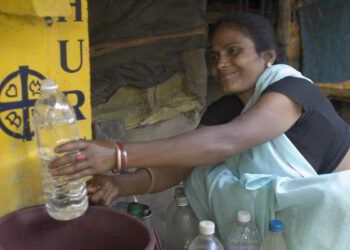Danger and hopelessness fill a tea estate in Asia, but the children have one refuge: a Bridge of Hope center.
Beady eyes surveyed the landscape without fear. A long, snakelike trunk searched the ground, looking for consumables. Two ivory tusks protruded from the mouth of this king of beasts. Four legs, like tree trunks, supported the mammoth body as it moved through the familiar domain.
Mudit’s heart sank at the sight. There was nothing he could do to stop the elephant from eating its way through his small plot of farmland.
As Mudit realized his time, effort and investment had been wasted yet again, despair etched itself deeper into the elderly father’s heart. How could he ever provide food for his children?
A Community Bereft
Mudit lived near a tea estate with thousands of other families. For years, their primary occupation had consisted of harvesting and processing tea leaves. The wages were never spectacular; sometimes they were barely enough for each family to survive. Then the estates started to close.
The communities quickly deteriorated as families struggled to make ends meet. Teenagers turned to thievery, cutting down public trees for lumber and stripping the area of metal to sell for scrap. Some families moved away, seeking to find a fresh start elsewhere. Many who remained took the daily risk of traveling in search of work, potentially wasting a day and travel expenses if work wasn’t available.
Mudit, despite being 65 and unable to do much physical labor, soon found himself among that group. If he found work, he could earn a small amount every day, but that only happened three or four days a week.
“I struggled to provide for my children’s education, for their clothing and food. If anybody is sick at home, I have to borrow money from people.”











